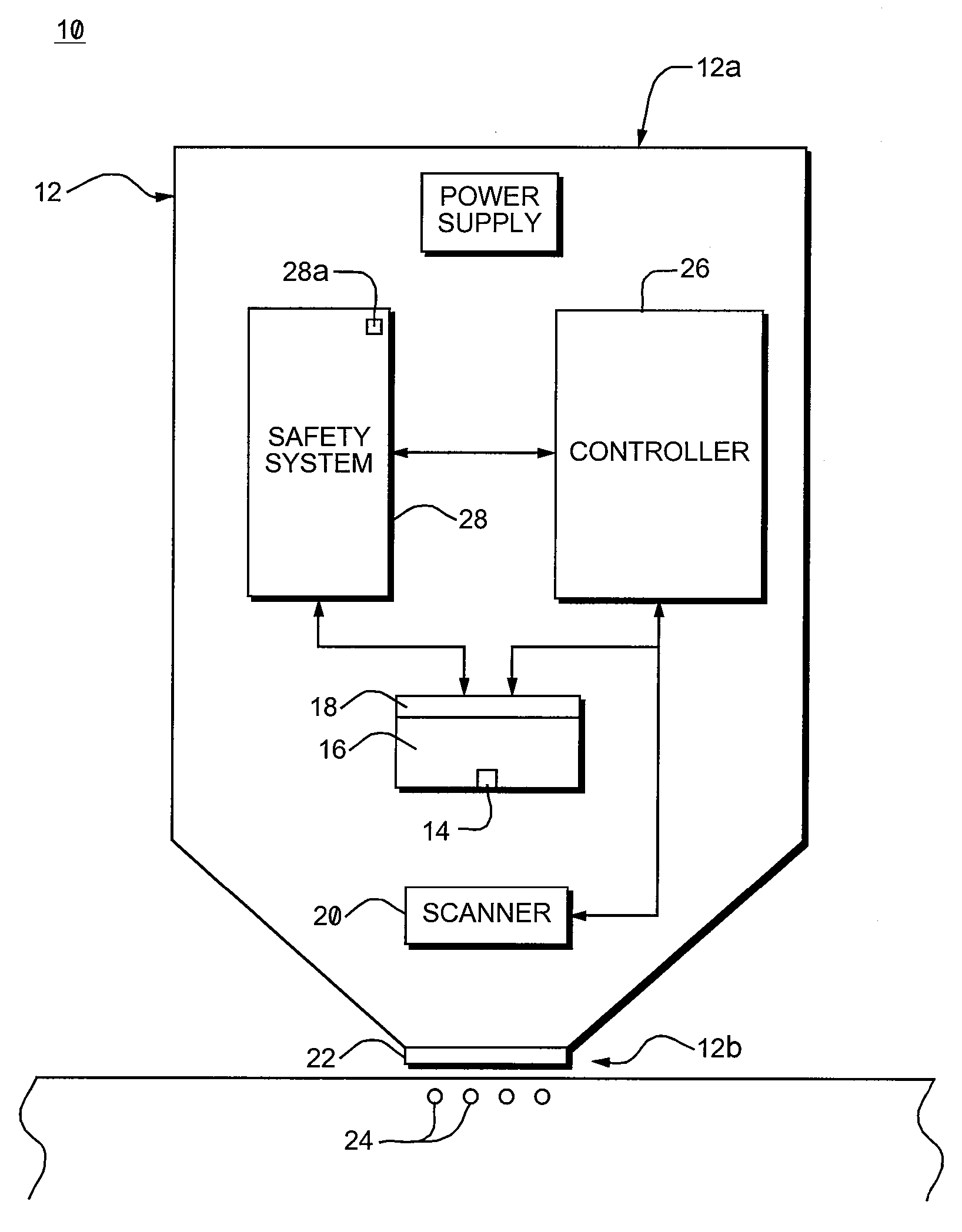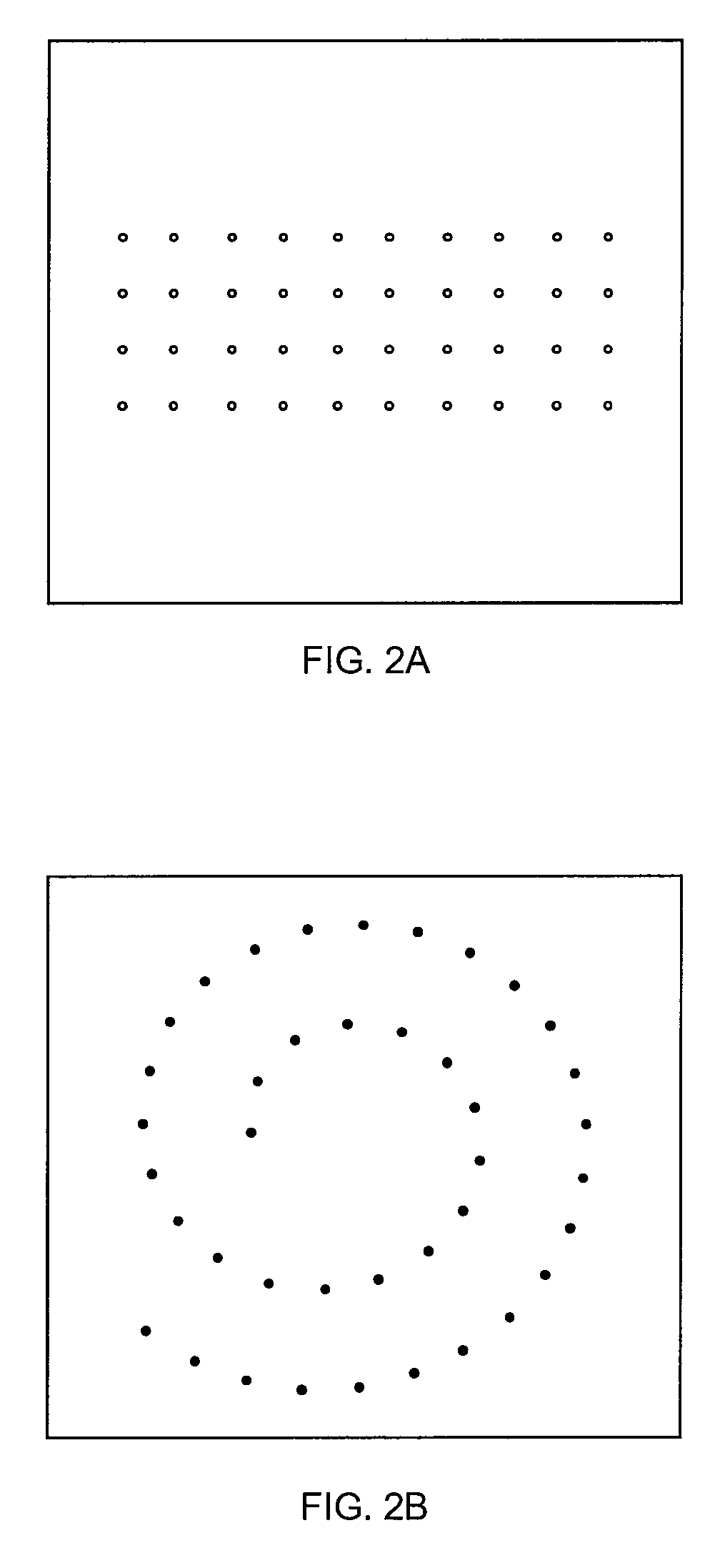Handheld Photocosmetic Device
a photocosmetic device and hand-held technology, applied in the field of photocosmetic devices, can solve the problems of limited popularity of this treatment, prolonged post-operative period requiring continuous care, and unsatisfactory clinical effects of non-ablative procedures, and achieve the effect of maintaining and improving the benefits obtained
- Summary
- Abstract
- Description
- Claims
- Application Information
AI Technical Summary
Benefits of technology
Problems solved by technology
Method used
Image
Examples
Embodiment Construction
[0072] When using electromagnetic radiation (EMR) to treat tissues, there are substantial advantages to producing lattices of EMR-treated discrete locations or islets in the tissue rather than large, continuous regions of EMR-treated tissue. The lattices are periodic or aperiodic patterns of islets in one, two or three dimensions in which the islets correspond to local maxima of EMR-treatment of tissue. The islets are separated from each other by non-treated tissue (or differently- or less-treated tissue). The EMR-treatment results in a lattice of EMR-treated islets which have been exposed to a particular wavelength or spectrum of EMR, and which is referred to herein as a lattice of “optical islets.” When the absorption of EMR energy results in significant temperature elevation in the EMR-treated islets, the lattice is referred to herein as a lattice of “thermal islets.” When an amount of energy is absorbed that is sufficient to significantly disrupt cellular or intercellular struct...
PUM
 Login to View More
Login to View More Abstract
Description
Claims
Application Information
 Login to View More
Login to View More - R&D
- Intellectual Property
- Life Sciences
- Materials
- Tech Scout
- Unparalleled Data Quality
- Higher Quality Content
- 60% Fewer Hallucinations
Browse by: Latest US Patents, China's latest patents, Technical Efficacy Thesaurus, Application Domain, Technology Topic, Popular Technical Reports.
© 2025 PatSnap. All rights reserved.Legal|Privacy policy|Modern Slavery Act Transparency Statement|Sitemap|About US| Contact US: help@patsnap.com



